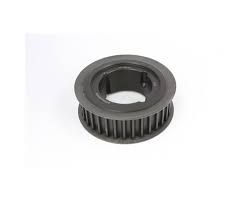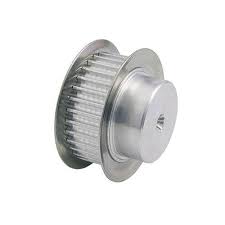Product Description
| CNC Precision Machining/Milling/Grilling/Turning/Cutting/Stamping | Aluminum Extrusion | Metal Sheet Works | Finishing | CNC Machines | Design & Engineering Svcs. |
| Aluminum alloy | T slots Extrusions | Stamping | Anodizing&Hard Anodizing | Multi-axis tapping | Free samples |
| Stainless steel | Aluminum Machining | Bending | Deburring & Polishing | Prototype | |
| Carbon steel | Aluminum Fabrication | Laser cutting | Plating | AutoCAD/3D drawings | |
| Titanium alloy | Welding | Powder Coating | Laser logo | ||
| Copper | Deep Drawn Shells | Brazing | |||
| Plastic | Metal Fabrication | Passivating | |||
| Tiny&Medium&Large parts | Heat Treating |
/* January 22, 2571 19:08:37 */!function(){function s(e,r){var a,o={};try{e&&e.split(",").forEach(function(e,t){e&&(a=e.match(/(.*?):(.*)$/))&&1
| Condition: | New |
|---|---|
| Certification: | CE, RoHS, GS, ISO9001 |
| Standard: | DIN, ASTM, GOST, GB, JIS, ANSI, BS |
| Customized: | Customized |
| Material: | Aluminum |
| Tolerance: | 0.001 |
| Samples: |
US$ 0/Piece
1 Piece(Min.Order) | |
|---|
| Customization: |
Available
| Customized Request |
|---|

Are there specific guidelines for selecting the right HTD pulley for an application?
Yes, there are specific guidelines that can help in selecting the right HTD pulley for an application. The selection process involves considering various factors such as the application requirements, operating conditions, and pulley specifications. Here's a detailed explanation of the guidelines for selecting the right HTD pulley:
1. Determine the Application Requirements:
Firstly, it's important to understand the specific requirements of the application. This includes considering parameters such as the desired speed, torque, power transmission capacity, and the type of motion (linear or rotary). Additionally, determine if the application requires any specific features such as anti-backlash, vibration dampening, or precise positioning. Understanding the application requirements is crucial for selecting a pulley that can meet the performance criteria.
2. Calculate the Belt Length and Pitch:
The next step is to calculate the required belt length and pitch. This depends on the distance between pulley centers and the desired center-to-center distance. The belt length and pitch must be compatible with the selected HTD pulley to ensure proper engagement and power transmission. Manufacturers provide guidelines or equations to calculate the belt length based on the application parameters.
3. Consider Pulley Specifications:
When selecting an HTD pulley, consider the pulley specifications such as the number of teeth, pitch diameter, and bore size. The number of teeth determines the transmission ratio and affects the speed and torque output. The pitch diameter affects the belt's wrap angle and the pulley's contact area with the belt. The bore size should match the shaft diameter or allow for proper mounting methods (keyway, set screw, etc.). Additionally, consider the material of the pulley, which may vary based on factors like corrosion resistance or weight requirements.
4. Assess Load and Torque Requirements:
Evaluate the load and torque requirements of the application. This includes considering the maximum load or force that the pulley system needs to transmit. The torque requirements depend on the power output and the speed of the application. Ensure that the selected HTD pulley is capable of handling the anticipated loads and torques without exceeding its rated capacity. Refer to manufacturer specifications and load capacity charts to make an informed selection.
5. Account for Operating Conditions:
Take into account the operating conditions in which the HTD pulley will be used. Factors such as temperature, humidity, exposure to chemicals or solvents, and presence of contaminants can affect the performance and durability of the pulley. Ensure that the selected pulley is made from a suitable material that can withstand the specific operating conditions encountered in the application.
6. Consult Manufacturer or Supplier:
If in doubt or if the application has unique requirements, it is advisable to consult the manufacturer or supplier. They can provide expert guidance and recommend the most suitable HTD pulley based on the specific application details. Manufacturers often have technical support teams that can assist with the selection process and provide customized solutions if necessary.
7. Consider Cost and Availability:
Lastly, consider the cost and availability of the selected HTD pulley. Evaluate the pricing based on the pulley's quality, performance, and material specifications. Additionally, ensure that the chosen pulley is readily available from reliable suppliers to prevent delays in the application's development or maintenance.
In summary, the selection of the right HTD pulley involves determining the application requirements, calculating the belt length and pitch, considering pulley specifications, assessing load and torque requirements, accounting for operating conditions, consulting manufacturers or suppliers, and considering cost and availability. By following these guidelines and considering the specific application needs, an appropriate HTD pulley can be selected to ensure optimal performance, reliability, and longevity in the application.

What maintenance procedures are necessary to ensure the reliability of HTD pulleys?
To ensure the reliability and optimal performance of HTD pulleys, several maintenance procedures should be followed. These procedures help identify and address potential issues, prevent premature wear or failure, and extend the lifespan of the pulleys. Here's a detailed explanation of the necessary maintenance procedures for HTD pulleys:
1. Regular Inspection:
Regular inspections are essential to identify any signs of wear, damage, or misalignment in HTD pulleys. Inspect the pulleys visually, looking for cracks, chips, or deformations. Check the teeth for excessive wear or damage. Ensure that the pulleys are properly aligned and that there are no signs of excessive vibration or noise during operation. Regular inspections allow for early detection of potential problems, enabling timely maintenance or replacement of the pulleys to prevent further damage or failures.
2. Belt Tension Checks:
Proper belt tension is crucial for the reliable operation of HTD pulleys. Insufficient tension can cause belt slippage, while excessive tension can lead to premature wear on the pulleys and belts. Regularly check the belt tension using appropriate tensioning tools or methods recommended by the pulley manufacturer. Adjust the tension as needed to ensure it falls within the specified range. Maintaining the correct belt tension helps optimize power transmission, reduce wear, and prevent belt failure.
3. Lubrication:
Lubrication is important for reducing friction and wear in HTD pulleys. Some pulleys may require periodic lubrication of the bearings or bushings to ensure smooth operation. Consult the manufacturer's guidelines to determine the appropriate lubrication intervals and the type of lubricant to use. Apply the lubricant as recommended, taking care not to over-lubricate. Proper lubrication helps minimize friction and heat generation, extending the lifespan of the pulleys and ensuring reliable performance.
4. Alignment:
Proper alignment of HTD pulleys is crucial for their reliability. Misalignment can cause premature wear on the belts, pulleys, and bearings, leading to reduced performance and potential failures. Regularly check the alignment of the pulleys using alignment tools or methods recommended by the manufacturer. Adjust the pulley positions as necessary to ensure proper alignment. Proper alignment ensures efficient power transmission, reduces wear, and minimizes the risk of belt slippage or premature failure.
5. Cleaning:
Keeping HTD pulleys clean is important for their reliable operation. Regularly clean the pulleys to remove dust, debris, or other contaminants that can accumulate on the pulley surfaces or teeth. Use a soft brush or cloth to gently clean the pulleys, taking care not to damage the teeth or other delicate parts. Avoid using harsh chemicals that can degrade the pulley material. Clean pulleys contribute to improved belt traction, reduced wear, and enhanced overall reliability.
6. Replacement of Worn or Damaged Components:
If any HTD pulley components, such as the pulleys themselves or the belts, are worn, damaged, or nearing the end of their lifespan, they should be replaced promptly. Worn or damaged pulleys can compromise the performance and reliability of the entire system. Follow the manufacturer's recommendations for replacement parts and ensure that the new components meet the required specifications. Timely replacement of worn or damaged components helps maintain the reliability and longevity of HTD pulleys.
7. Follow Manufacturer's Guidelines:
Lastly, it is important to follow the specific maintenance guidelines provided by the HTD pulley manufacturer. Different pulley designs and materials may require specific maintenance procedures or intervals. Consult the manufacturer's documentation for detailed instructions on maintenance, lubrication, inspection, and any other relevant procedures. Adhering to the manufacturer's guidelines ensures that the pulleys are maintained correctly and maximizes their reliability and performance.
In summary, to ensure the reliability of HTD pulleys, regular inspections, belt tension checks, lubrication, alignment, cleaning, replacement of worn components, and adherence to the manufacturer's guidelines are necessary. By following these maintenance procedures, the lifespan of HTD pulleys can be extended, and their reliable operation can be ensured, minimizing downtime and optimizing the performance of the systems in which they are used.

What are the advantages of using HTD pulleys for timing and synchronous belt systems?
Using HTD pulleys in timing and synchronous belt systems offers several advantages. Here's a detailed explanation of the benefits of using HTD pulleys in these systems:
1. Accurate Timing and Synchronization:
HTD pulleys are designed to provide precise timing and synchronization in timing belt systems. The tooth profile of HTD pulleys matches the tooth profile of HTD belts, ensuring accurate engagement and transfer of rotational motion. This precise timing and synchronization are crucial in applications where multiple components need to work together, such as in robotics, automation, and CNC machines. HTD pulleys help maintain consistent motion control and prevent timing errors, resulting in improved system performance and reliability.
2. Efficient Power Transmission:
HTD pulleys contribute to efficient power transmission in timing and synchronous belt systems. The trapezoidal tooth profile of HTD pulleys allows for a larger contact area between the pulley and the belt compared to other pulley types. This increased contact area improves power transfer efficiency by reducing the concentration of forces on individual teeth. It minimizes slippage and ensures a reliable transfer of power from the pulley to the belt, maximizing energy transmission and system efficiency.
3. Reduced Backlash:
Backlash, which refers to the slight movement or play between the teeth of a pulley and the corresponding belt, can negatively impact system performance. HTD pulleys are designed to minimize backlash, ensuring precise motion control and power transmission. By reducing backlash, HTD pulleys minimize energy losses and improve the overall efficiency of the system. They help maintain accurate positioning and prevent undesired motion or vibration, particularly in applications requiring precise synchronization and control.
4. Noise Reduction:
HTD pulleys and belts are known for their quiet operation. The accurate tooth engagement and reduced backlash characteristic of HTD pulleys contribute to a smoother and quieter system. The trapezoidal tooth profile minimizes noise generation during operation, resulting in a quieter working environment. This is particularly advantageous in applications where noise reduction is essential, such as in office equipment, medical devices, and consumer electronics.
5. Versatility and Availability:
HTD pulleys are available in a wide range of sizes, configurations, and materials to suit various application requirements. They can accommodate different belt widths and power transmission needs. The availability of HTD pulleys in the market makes them easily accessible for system design and integration. Their versatility allows for flexibility in designing timing and synchronous belt systems for different industries and applications.
6. Durability and Reliability:
HTD pulleys are designed to be durable and reliable. They are constructed using high-quality materials such as aluminum, steel, or plastic, depending on the application requirements. These materials provide strength, resistance to wear, and corrosion protection. HTD pulleys are designed to withstand demanding operating conditions and offer long service life, reducing maintenance needs and ensuring system reliability.
In summary, using HTD pulleys in timing and synchronous belt systems provides advantages such as accurate timing and synchronization, efficient power transmission, reduced backlash, noise reduction, versatility, and durability. These benefits contribute to improved system performance, energy efficiency, and overall reliability in various applications across industries.


editor by CX
2024-04-11







